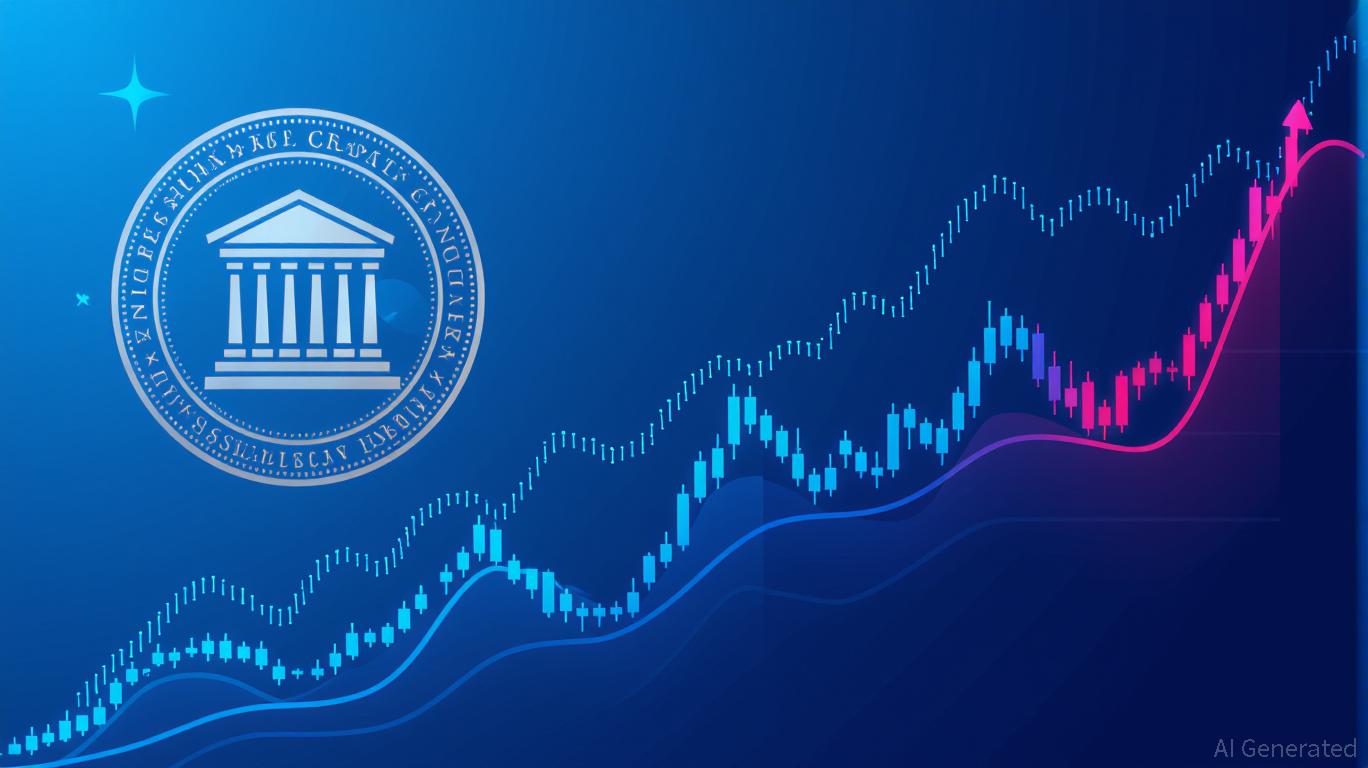Modern Monetary Theory and the Transformation of Crypto Valuations: Institutional Integration and Policy-Induced Drivers
- Modern Monetary Theory (MMT) is reshaping 2025 financial policies as central banks use it to manage post-pandemic economies, contrasting with crypto's decentralized ethos. - Crypto valuations now depend on regulatory alignment and institutional adoption, with 55% of hedge funds holding digital assets due to clearer U.S. regulations. - Central banks experiment with tokenized reserves while BIS demands stricter stablecoin governance, shifting focus from speculation to policy-driven stability. - A potential
MMT and the Crypto Paradox
The main principle of MMT—that governments issuing their own currency can spend without immediate fiscal limits—has gained momentum as central banks implement broad fiscal measures to control inflation and manage liquidity, as highlighted in a
The instability of algorithmic stablecoins like USDsd between 2023 and 2025 exposed significant governance issues, leading the Bank for International Settlements (BIS) to call for tighter regulations based on the "three pillars" of robust monetary systems: unity, adaptability, and reliability, as mentioned in the

Institutional Adoption: A New Era of Compliance
There has been a notable increase in institutional participation in cryptocurrencies, propelled by a more favorable regulatory climate. A 2025 study by the Alternative Investment Management Association (AIMA) and PwC found that 55% of traditional hedge funds now have digital asset exposure, up from 47% in 2024, as stated in a
Nearly half of these funds point to U.S. regulatory progress as a major reason for expanding their crypto investments. This trend goes beyond speculation: tokenization is becoming more popular, with 52% of hedge funds interested in tokenized fund structures for managing liquidity and collateral, according to the
The Federal Reserve’s adoption of MMT-inspired strategies, such as large-scale government spending to control inflation, indirectly impacts crypto prices by changing how attractive digital assets are compared to traditional safe investments, as noted in the
Still, obstacles remain. For example, Microsoft’s shareholders recently voted against a proposal to add Bitcoin to the company’s balance sheet, as covered in a
Policy-Driven Catalysts and the Future of Money
The U.S. government’s consideration of establishing a Strategic Bitcoin Reserve (SBR) could further shake up the market. Analysts such as Jack Mallers have suggested that a Trump administration might move to recognize Bitcoin as a reserve asset early in its term, as discussed in a
Such a policy would be consistent with MMT’s focus on government-led fiscal flexibility, providing a state-backed alternative to private stablecoins and strengthening institutional trust in digital assets.
However, the future remains uncertain and complex. As MMT expert William Mitchell observes, "Striking a balance between government involvement and technological progress will determine the future of money," according to the
Conclusion
The convergence of MMT and the cryptocurrency sector in 2025 highlights the ongoing evolution of global finance. As central banks and regulators reshape monetary frameworks, institutional investors are adjusting their strategies to succeed in an environment where regulatory compliance and stability are prioritized over pure speculation. For digital assets to prosper, they must evolve to meet these new demands, where policy changes and institutional participation are just as vital as technological breakthroughs.
Disclaimer: The content of this article solely reflects the author's opinion and does not represent the platform in any capacity. This article is not intended to serve as a reference for making investment decisions.
You may also like
Public Company's $IP Token Reserve Marks the Beginning of a Programmable IP Economy Era
- Crypto.com partners with IP Strategy, first public company to use $IP tokens as primary reserve asset. - Agreement includes custody, trading, and staking for 52.5M $IP tokens valued at $230M, boosting institutional IP token adoption. - Partnership enables regulated exposure to $80T programmable IP economy via Story Protocol's blockchain infrastructure. - Executives highlight infrastructure's role in securing IP assets while risks like liquidity and custody execution remain critical concerns.

Meta’s lead AI researcher Yann LeCun is said to be preparing to depart in order to launch his own company
How entrepreneurs can set themselves up early for successful late-stage fundraising